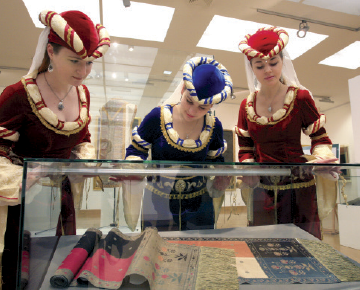Six Slutsk belts arrive from Warsaw for exhibition at National Art Museum of Belarus
This is not the first time that Slutsk belts have returned to Belarus for display, since exhibits from Moscow, Lvov and Vilnius have visited Minsk previously. The current show at the National Art Museum — featuring Slutsk belts from Warsaw’s National Museum — is being realised as part of a state programme to promote the ancient craft of weaving.
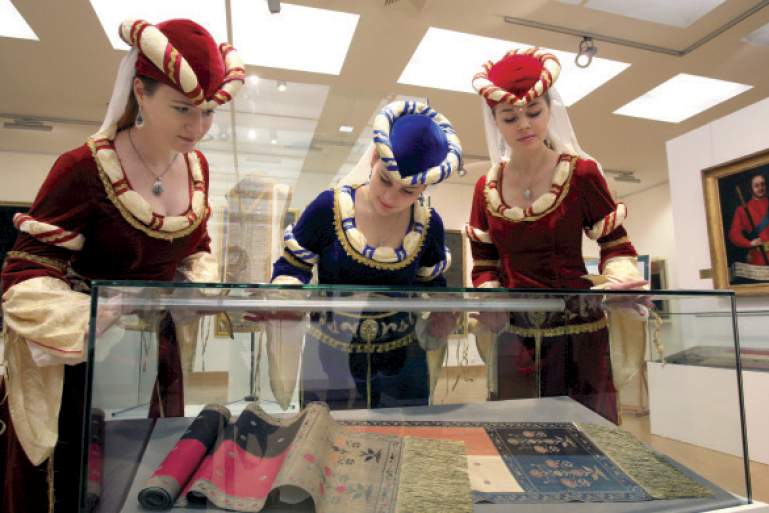
Exhibition of Slutsk belts from National Museum of Warsaw opens in Minsk
On display are six belts made in Slutsk, on loan from Poland’s richest collection, held at the Warsaw National Museum. It boasts 300 kontusz belts, including 58 Slutsk belts. Five of those on loan were produced under the leadership of Jan and Leon Madjarskis (1767-1807); the sixth belt was woven after 1807. All the belts were purchased from individuals, between the 1940s and 1960s.
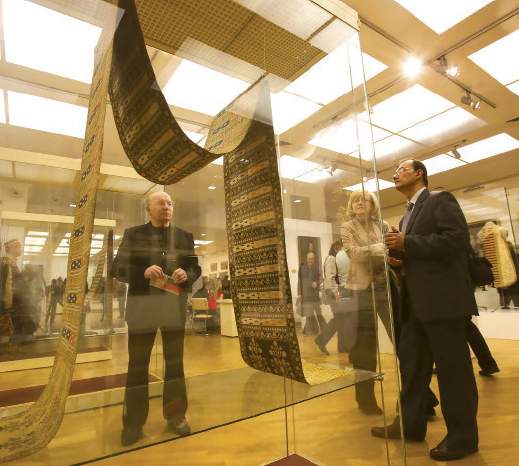
Exhibition of Slutsk belts from National Museum of Warsaw opens in Minsk
What are kontusz belts? These were an obligatory accessory for the formal men’s attire of Rzecz Pospolita gentry, each hand-woven, as a work of art. Skilfully-woven masterpieces were created in the mid-18th-early 19th century, and Slutsk belts were the most coveted of all, worn over a kontusz (a long robe, usually reaching to below the knees, with long and loose sleeves). The silken belts first became fashionable in the 17th-18th century, embroidered with golden and silver threads, making them a symbol of wealth for Europe’s upper classes. By the mid-17th century, Eastern motifs had entered into the Sarmatian culture of the Rzecz Pospolita, with Armenian merchants bringing examples from Persia, Istanbul, China and India. These were much sought after, denoting social status and power, although belts were worn only on solemn occasions, being costly. Enterprising magnates established several (persiarnyas) workshops, with that of the Potocki dukes being among the first in the Rzecz Pospolita, operating in Stanislav (now Ukrainian Ivano-Frankovsk). ‘Persk’ Eastern-style belts were also manufactured at the Radziwills’ Nesvizh family estate, from the mid-18th century.
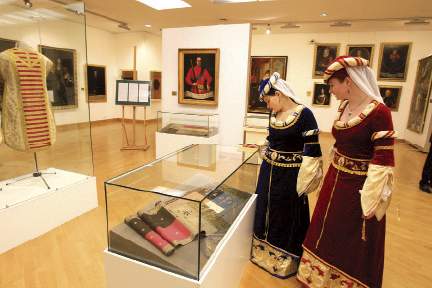
Photo by BELTA
In the 17th century, Slutsk masters skilfully wove belts, carpets, towels, napkins and cloths. High level of their mastery inspired Duke Michal Kazimierz Radziwill to launch belt production. In 1758, he invited Armenian Jan Madjarski, from Stanislav, to work at his Nesvizh workshop (from 1767, Slutsk manufacture workshop). The Istanbul-born master taught local craftsmen to create the 2-5m long belts, which were usually double-sided (or, occasionally, four-sided, with a white side for weddings, red for birthdays and solemn celebrations, grey for official meetings, and black for sad ceremonies).
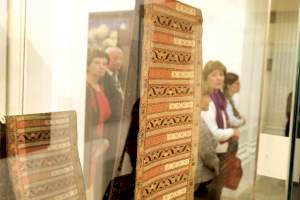
Exhibition of Slutsk belts from National Museum of Warsaw opens in Minsk
The exhibition at the National Art Museum of Belarus displays one two-sided and five four-sided belts, each decorated with botanical or geometric motifs; they could also use different number of metalised golden or silver threads. Their tails usually featured ornately shaped flower bouquets (sometimes placed in vases) while the fringes were embroidered, as was the name of the master or workshop. Those made in Slutsk bore the words ‘In the Town of Slutsk’.

Exhibition of Slutsk belts from National Museum of Warsaw opens in Minsk
As belt production flourished, factories producing Slutsk-style belts were set up across the territory of contemporary Belarus, in such cities as Grodno, Korelichi, Slonim and Ruzhany, as well as in Polish Lipkow and Kobylka (near Warsaw), Krakow and Gdansk; in Ukraine, they operated in Korets, Olesko, Buchach and Lvov. Lyon also made belts bearing traditional Slutsk motifs, alongside those designed by French artists.
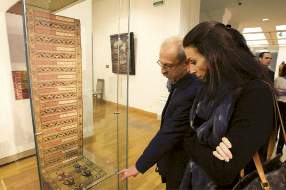
Exhibition of Slutsk belts from National Museum of Warsaw opens in Minsk
The range of weaving reduced after the Rzecz Pospolita’s third split (in 1795) and ethnic Belarusian lands’ joined the Russian Empire. After the 1831 rebellion (suppressed by the Tsarist government), the wearing of kontusz costume was banned. In the 19th-early 20th century, silk belts were kept by state and private collections, with Roman Catholic churches obtaining some from families (most of these were converted for use as liturgical vestments).
In total, kontusz belts are a unique phenomenon of national culture. Their elegant artistry, colour, wonderful motifs and compositional harmony place them amidst the greatest achievements of global artistic culture.









